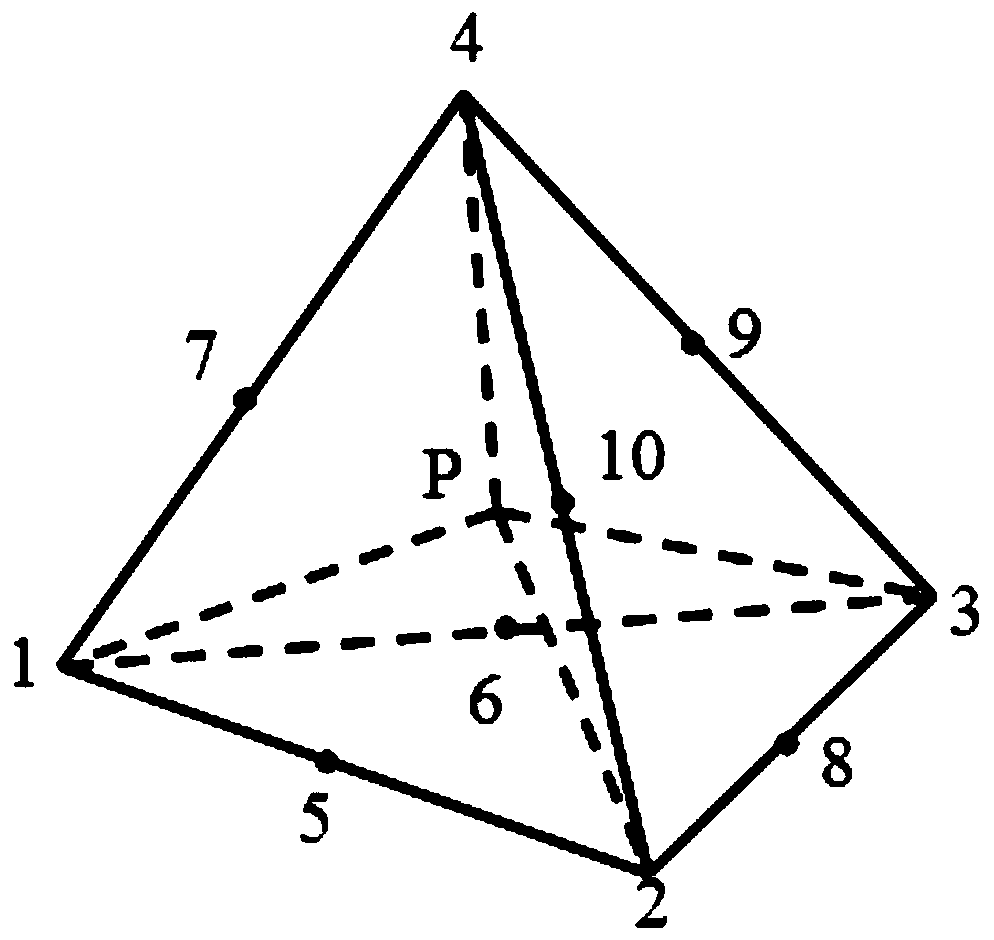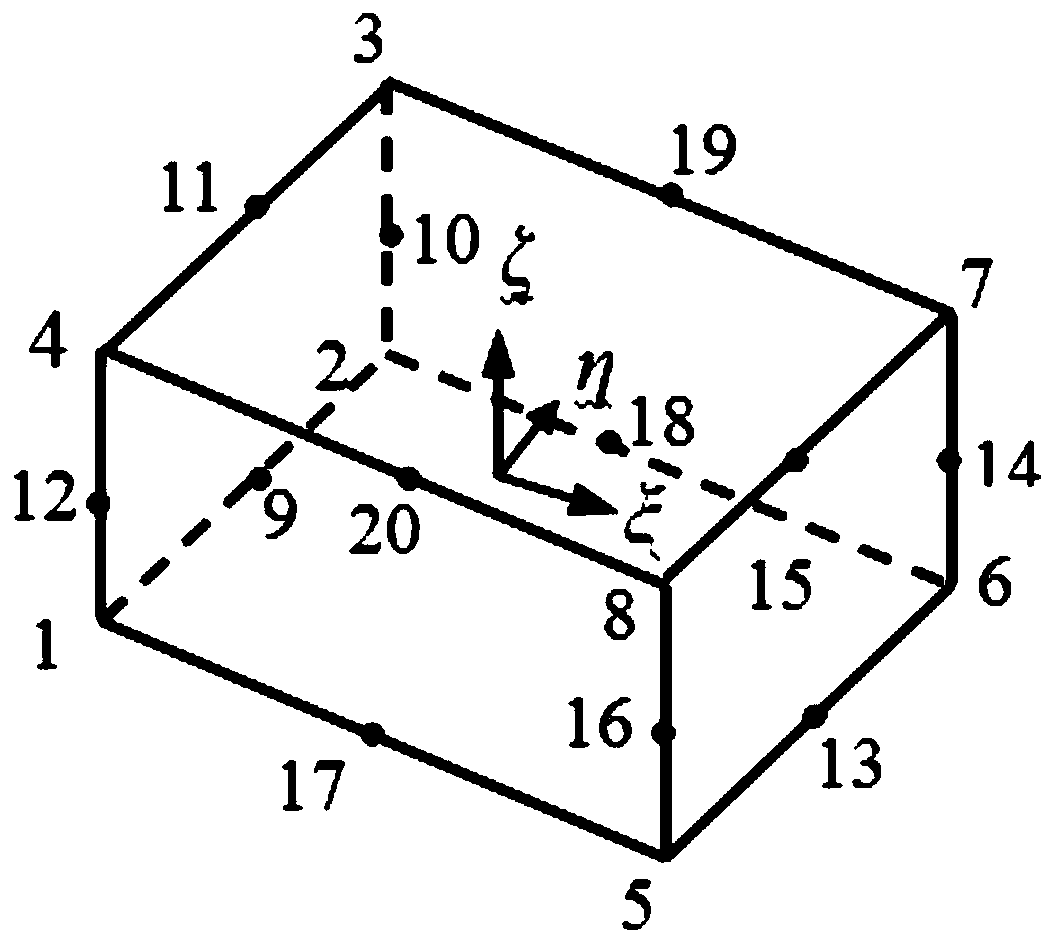A method for calculating the internal space charge distribution of XLPE cables using electromagnetic theory
A cross-linked polyethylene, charge distribution technology, applied in the direction of measuring electrical variables, instruments, measuring devices, etc., to achieve cost-saving effects
- Summary
- Abstract
- Description
- Claims
- Application Information
AI Technical Summary
Problems solved by technology
Method used
Image
Examples
Embodiment 1
[0019] A method for calculating the space charge distribution inside a cross-linked polyethylene cable with electromagnetic theory, comprising the following steps:
[0020] Step 1: Use the finite element analysis software to establish the cable model, use the second-order tetrahedron element to divide, apply the corresponding load to calculate the potential of each node, and export the node file, element file and potential file.
[0021] Step 2: According to the geometric characteristics of the three-dimensional tetrahedron unit, the volume coordinates are introduced as natural coordinates, such as figure 1 As shown, the volume coordinates of any point P(x, y, z) in the unit is:
[0022]
[0023] In the formula, L1, L2, L3, and L4 respectively represent the shape functions of the four vertices of the first-order tetrahedron, and vol represents the volume of the tetrahedron.
[0024]
[0025]
[0026]
[0027] Therefore there is L 1 +L 2 +L 3 +L 4 =1, the verte...
Embodiment 2
[0049] A method for calculating the space charge distribution inside a cross-linked polyethylene cable with electromagnetic theory, comprising the following steps:
[0050] Step 1: Use the finite element analysis software to establish the cable model, use the second-order hexahedron element division, apply the corresponding load to calculate the potential of each node, and export the node file, element file and potential file;
[0051] Step 2: Introduce three natural coordinates ξ, η, ζ, such as figure 2 As shown, ξ represents the ratio of any point on the ξ axis to the distance between the origin and half the length of the hexahedron, η represents the ratio of any point on the η axis to the distance from the origin to half the width of the hexahedron, and ζ represents the distance between any point on the ζ axis and the origin and The ratio of half of the height of the hexahedron, so the variation range of ξ, η, ζ is:
[0052] -1≤ξ≤1
[0053] -1≤η≤1
[0054] -1≤ζ≤1
[00...
PUM
 Login to View More
Login to View More Abstract
Description
Claims
Application Information
 Login to View More
Login to View More - R&D
- Intellectual Property
- Life Sciences
- Materials
- Tech Scout
- Unparalleled Data Quality
- Higher Quality Content
- 60% Fewer Hallucinations
Browse by: Latest US Patents, China's latest patents, Technical Efficacy Thesaurus, Application Domain, Technology Topic, Popular Technical Reports.
© 2025 PatSnap. All rights reserved.Legal|Privacy policy|Modern Slavery Act Transparency Statement|Sitemap|About US| Contact US: help@patsnap.com



